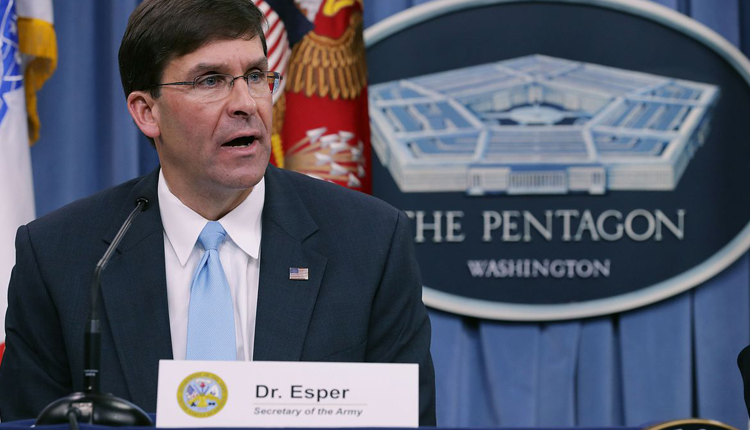The United States has completed its military pullback in northeastern Syria, settling into a more stable posture of about 600 troops in the rest of the country after repositioning and reducing forces, Defense Secretary Mark Esper said.
Esper’s remarks in an interview with Reuters could signal the end of a period of turbulence and uncertainty surrounding the U.S. military presence in Syria after President Donald Trump’s initial withdrawal order in October.
Since then, troop levels in Syria have fallen about 40 percent from around 1,000.
Esper stressed he retained the ability to move in and out smaller numbers of forces as needed into Syria. But he suggested the number of troops will fluctuate around the 600-level for the foreseeable future.
“It will be relatively static around that number. But if we see things happen … I can dial up a little bit,” Esper said late on Wednesday during a flight back from the NATO summit on the outskirts of London.
Esper also didn’t rule out being able to reduce U.S. troop levels in Syria further if European allies contributed to the Syria mission.
“The coalition is talking a lot again. We could see some allies want to volunteer troops,” Esper said, without suggesting any new contribution was imminent.
“If an allied country, a NATO country, decided to give us 50 people, I might be able to turn off 50 people.”
The U.S. military says it is focused on preventing a resurgence of Islamic State in Syria and carried out a raid last month that led to the death of Islamic State leader Abu Bakr al-Baghdadi.
Trump, in London, said he wanted remaining U.S. forces to ensure Syria’s oil reserves don’t fall back into the militant group’s hands.
“We kept the oil. And the oil is what fueled ISIS,” Trump said, using an acronym for Islamic State.
NO MOVEMENT ON TURKEY S-400S
Trump softened his pullout plans for Syria after backlash from Congress, including among key Republicans, who say he cleared the way for a long-threatened Turkish incursion against Kurdish forces in Syria who had been America’s top allies in the battle against Islamic State.
NATO diplomats worry that Turkey, a NATO member since 1952 and a critical ally in the Middle East, has increasingly acted unilaterally, launching its incursion in Syria against U.S.-backed forces and buying advanced Russian S-400 air defenses.
Washington says the S-400 system is incompatible with NATO air defenses, poses a threat to Lockheed Martin Corp’s F-35 stealth fighter jets and announced in July it was removing Turkey from the F-35 program. It has also warned of possible U.S. sanctions.
After summit talks between Trump and Turkish President Tayyip Erdogan, Esper suggested Ankara had not budged yet on the S-400 issue.
“There’s no movement at this point,” Esper said.
Still, after lobbying by NATO allies, including the United States, Erdogan backed off from a threat to block defense plans for the Baltic states and Poland unless allies declared Kurdish fighters in Syria terrorists.
“I think it was a positive move forward,” Esper said, of the change in position by Turkey.
“They’ve been a valuable part of NATO for decades, from the earliest days. So we got to keep them in the fold.”


